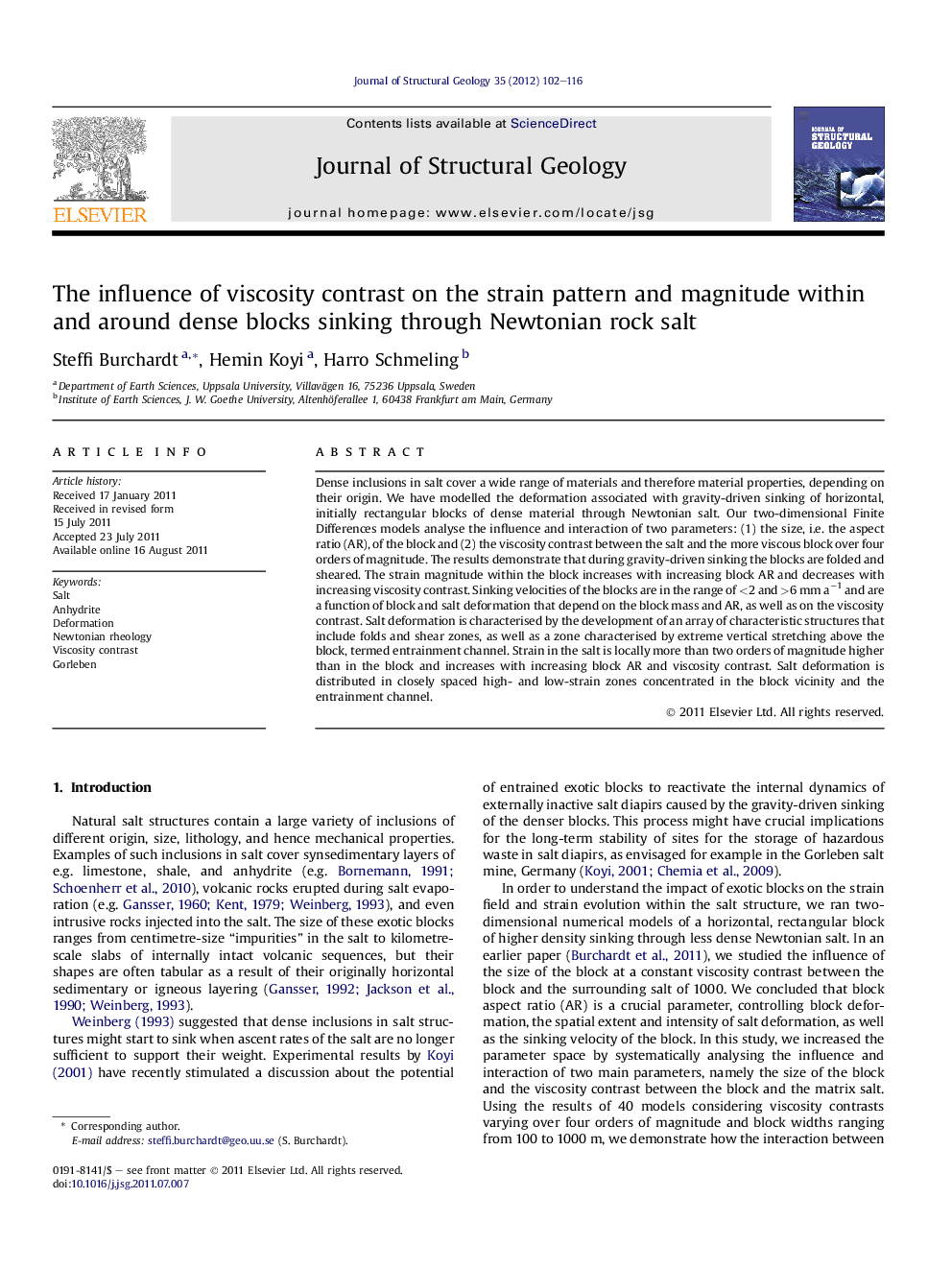| کد مقاله | کد نشریه | سال انتشار | مقاله انگلیسی | نسخه تمام متن |
|---|---|---|---|---|
| 4733395 | 1640542 | 2012 | 15 صفحه PDF | دانلود رایگان |

Dense inclusions in salt cover a wide range of materials and therefore material properties, depending on their origin. We have modelled the deformation associated with gravity-driven sinking of horizontal, initially rectangular blocks of dense material through Newtonian salt. Our two-dimensional Finite Differences models analyse the influence and interaction of two parameters: (1) the size, i.e. the aspect ratio (AR), of the block and (2) the viscosity contrast between the salt and the more viscous block over four orders of magnitude. The results demonstrate that during gravity-driven sinking the blocks are folded and sheared. The strain magnitude within the block increases with increasing block AR and decreases with increasing viscosity contrast. Sinking velocities of the blocks are in the range of <2 and >6 mm a−1 and are a function of block and salt deformation that depend on the block mass and AR, as well as on the viscosity contrast. Salt deformation is characterised by the development of an array of characteristic structures that include folds and shear zones, as well as a zone characterised by extreme vertical stretching above the block, termed entrainment channel. Strain in the salt is locally more than two orders of magnitude higher than in the block and increases with increasing block AR and viscosity contrast. Salt deformation is distributed in closely spaced high- and low-strain zones concentrated in the block vicinity and the entrainment channel.
► Dense anhydrite blocks sink through Newtonian salk driven by gravity.
► Sinking causes folding and shearing of the block and severe deformation of the salt.
► Block and salt strain depend on the viscosity contrast between block and salt.
► Salt strain comprises high- next to low-strain zones with folds and shear zones.
► Sinking velocity is a function of block mass and deformation and salt deformation.
Journal: Journal of Structural Geology - Volume 35, February 2012, Pages 102–116